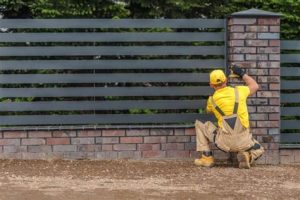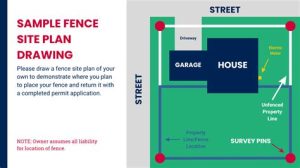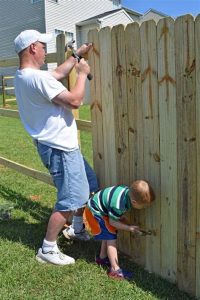Discover essential local fence codes, height restrictions, material requirements, property line regulations, and permit processes to ensure a compliant fencing project.Installing a fence can significantly enhance the beauty and functionality of your property, but before you dive into your DIY project, it’s crucial to understand the local regulations governing fence installation. Navigating the complexities of local codes can save you time, money, and potential legal headaches down the road. This blog post will guide you through the essential steps to ensure your fence aligns with local standards. We’ll explore how to research local fence codes, delve into height restrictions, discover material requirements, examine property line regulations, and highlight the importance of obtaining necessary permits. Whether you’re enhancing privacy, safety, or aesthetic appeal, being well-informed can make your DIY fence installation a smooth and successful endeavor. Let’s get started on ensuring your project is up to code!
Researching Local Fence Codes
When embarking on a DIY fence installation project, the first step is to thoroughly research local fence codes. These regulations can greatly affect the planning and execution of your fence project. Understanding these codes will help ensure that your fence is compliant, safe, and aesthetically pleasing to your neighborhood.
Each locality may have specific rules regarding fence height, material requirements, and even property line regulations. Failure to comply with these codes may result in fines, the requirement to remove the fence, or disputes with neighbors. It’s essential to check with local zoning offices, building departments, or homeowner associations before starting your project.
- Height restrictions: Learn what height is permissible for residential fences.
- Material restrictions: Some areas may have zoning regulations determining which materials can be used.
- Setback requirements: Determine how far your fence must be installed from property lines.
Understanding Height Restrictions
When planning a DIY fence installation, one of the most crucial aspects to consider is height restrictions. These regulations can vary widely depending on your location, influenced by local zoning laws and neighborhood regulations. Understanding these limitations is essential to ensure that your new fence is both compliant and visually appealing.
Most municipalities impose specific guidelines on how high a fence can be built, particularly in residential areas. Typically, the front yard fences may have stricter height limits, often capping at around 3-4 feet. In contrast, backyard fences may allow for greater heights, usually around 6-8 feet. It is important to check with your local zoning office or municipal code to get precise measurements that pertain to your area.
Additionally, these height restrictions can also be influenced by factors such as proximity to streets, the elevation of your property, and even homeowners’ association rules. Therefore, ensuring compliance with local height regulations is not just a legal formality; it’s a way to maintain good relations with your neighbors and improve the aesthetic of your property.
Learning Material Requirements
When planning a DIY fence installation, understanding the material requirements is essential to ensure that your fence will be durable, functional, and compliant with local regulations. Different materials have varying properties, costs, and aesthetic qualities, so it’s important to consider all your options carefully.
| Material | Durability | Cost | Aesthetic Appeal |
|---|---|---|---|
| Wood | Moderate | $$ | Classic look |
| Vinyl | High | $$$ | Modern look |
| Chain Link | Low | $ | Minimalistic |
| Metal (Aluminum, Steel) | High | $$$ | Industrial |
It’s crucial to select the right material based on your specific needs, such as weather resistance, privacy, security, and maintenance requirements. For example, if you live in a region prone to harsh weather, opting for durable materials like vinyl or metal may be beneficial in the long run.
Additionally, you should also consider local availability of materials as it can affect both the cost and the environmental footprint of your fence installation.
Exploring Property Line Regulations
When planning a DIY fence installation, one of the most crucial aspects to consider is the property line regulations governing your area. These regulations determine where you can place your fence and whether it can encroach upon your neighbor’s land. Ignoring these rules can lead to disputes, legal issues, and even the forced removal of your fence.
Each locality has its own set of rules regarding fence placement. Generally, property lines are defined by surveys, but it’s advisable to obtain a current survey of your property before proceeding. Many communities provide resources where you can access property line maps, or you can hire a professional land surveyor. Understanding your exact property lines is essential to avoid costly mistakes.
It’s also important to check with your local municipality about any setback requirements or easements that may affect where your fence can be installed. For example, many local codes may require your fence to be a certain distance from the property line, especially if it’s a higher structure or made of specific materials.
Obtaining Necessary Permits
When it comes to installing a fence, one of the most crucial steps is obtaining necessary permits. Many local jurisdictions require permits for fence installation to ensure that the construction adheres to safety and zoning regulations. Failing to secure these permits can lead to penalties, fines, or even having to remove the fence entirely.
Before starting your DIY fence project, it’s important to check the local laws pertaining to fencing. Each city or county may have different permit requirements.
- Visit your local planning department – They will provide information on specific regulations for fences in your area.
- Understand the application process – Familiarize yourself with how to apply for a permit, including any necessary documentation.
- Check zoning laws – Ensure that your proposed fence location complies with local zoning rules and property line regulations.
Some municipalities might require you to submit plans or drawings that illustrate the design and a site plan that shows the fence’s dimensions and placement. It’s always best to be upfront about your project and give all details to avoid delays in the permit approval process.
If your fence is taller than a certain height or involves specific materials, you might face additional requirements. Keeping yourself informed about these local codes is essential for a smooth DIY installation.
Frequently Asked Questions
What are local codes and why are they important for DIY fence installation?
Local codes are regulations set by municipal authorities that dictate various construction standards, including fence installation. They are important to ensure safety, compliance with property boundaries, and adherence to aesthetic standards in the community.
How can I find out the local codes for fence installation in my area?
You can find local codes by visiting your city or county’s planning department website, contacting them directly, or by checking with your homeowners association if applicable.
What should I do if my fence plans do not comply with local codes?
If your fence plans do not comply, you may need to revise your design or seek a variance. Variance applications can sometimes allow for exceptions to the codes, but they often require a formal review process.
Are there typically height restrictions for fences?
Yes, many local codes impose height restrictions for fences, often varying based on the type of zone (residential, commercial, etc.) or location (front yard vs. backyard). Be sure to check local regulations for specific limits.
What permits might be required for fence installation?
Depending on your local laws, you may be required to obtain a building permit before installing a fence. It is essential to check with your local authority to determine if a permit is necessary.
Can I install a fence on my property line without permission?
While you can install a fence on your property line, it’s advisable to confirm the exact boundary and consult your neighbor beforehand. Some areas also have regulations regarding easements or shared boundaries.
What are common materials allowed for fencing according to local codes?
Commonly allowed materials include wood, vinyl, chain link, and metal, but local codes may specify restrictions or guidelines, such as the type of wood or finish required, so it’s best to verify with local regulations.




